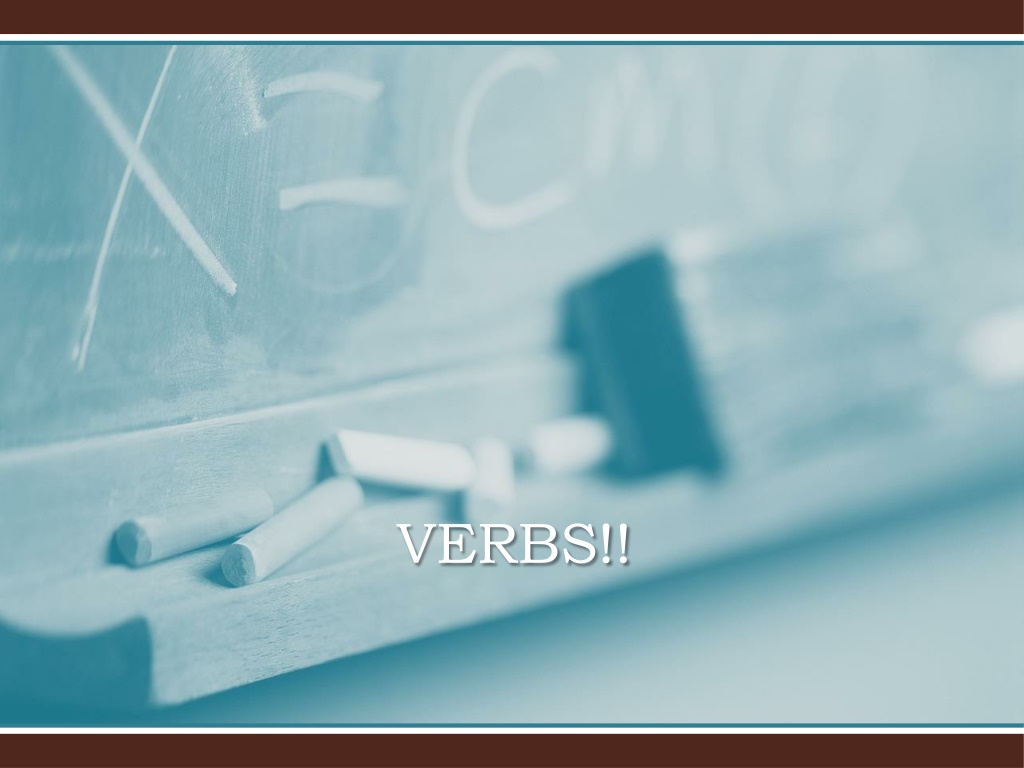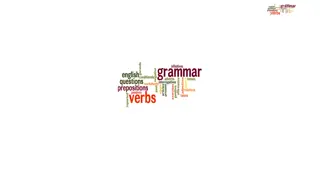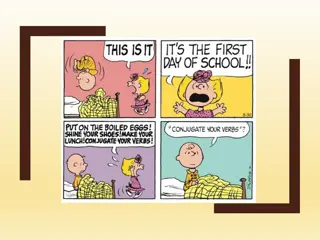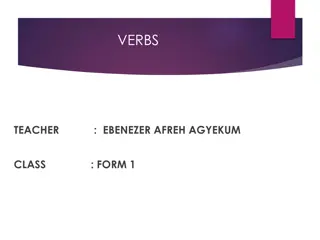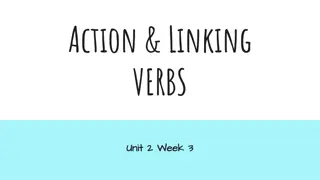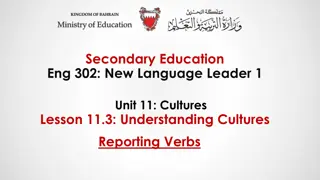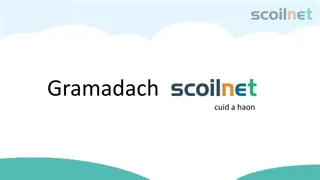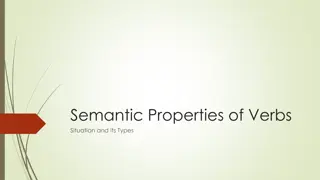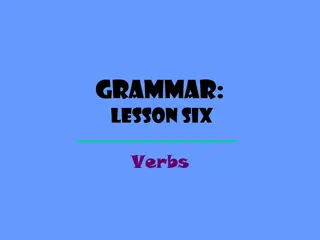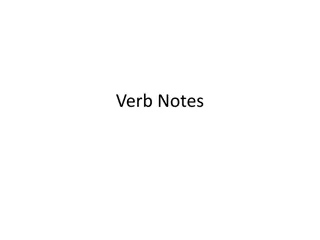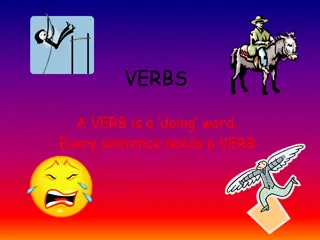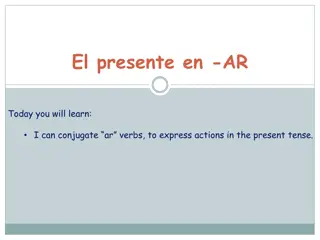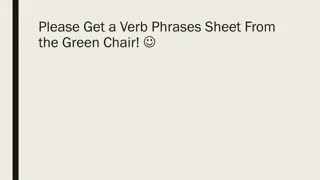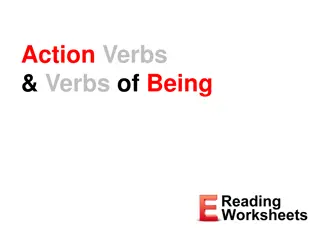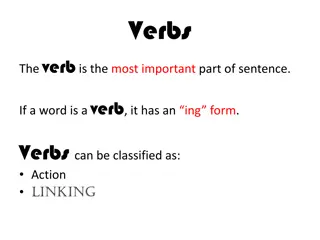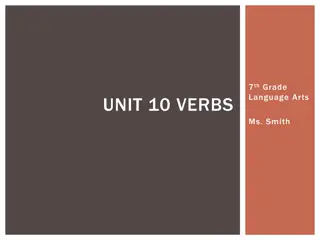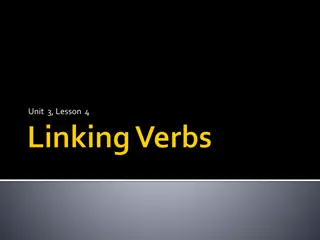Understanding Verbs: Types and Usage
Verbs are essential in forming statements and expressing action or states of being. They can show time through different tenses such as past, present, and future. Action verbs depict physical or mental actions, while linking verbs connect the subject with a noun, pronoun, or adjective. Verb phrases can consist of multiple words, with auxiliary verbs aiding the main verb to express time or emphasize meaning. Linking verbs play a crucial role in forming various tenses and emphasizing the significance of the action. Explore the world of verbs and their usage in this informative content.
Download Presentation

Please find below an Image/Link to download the presentation.
The content on the website is provided AS IS for your information and personal use only. It may not be sold, licensed, or shared on other websites without obtaining consent from the author. Download presentation by click this link. If you encounter any issues during the download, it is possible that the publisher has removed the file from their server.
E N D
Presentation Transcript
DEFINITION Word that expresses action or a state of being Is necessary to make a statement Primary characteristic of a verb is its ability to express time Verbs express time by means of tense forms (past, present, future tense) Present Tense: They watch the race. Past Tense: They watched the race. Future Tense: They will watch the race.
ActionVerbs Tells what someone or something did Action verbs express physical and mental actions. Examples: Physical Action: Ted waved the signal flag. Mental Action: Meredith hoped for success.
Verbs that Show State of Being Called Linking Verbs Links or joins subject of a sentence with a noun, pronoun or adjective that identifies or describes the subject. Most common linking verbs: The verb Be in all its forms: Am, Is, Are, Be, Was, Were Examples: Archery is an outdoor sport. I am ready. He was in fifth grade last year.
Linking Verbs Other Verbs that Can be Linking Verbs Appear, Become, Continue, Feel, Grow, Look, Remain, Seem, Smell, Sound and Taste Examples: This salad tastes good. The sun feels warm. You look comfortable. The first novel in the series remains my favorite.
Verb Phrases A verb in a sentence may consist of more than one word. Words that accompany the main verb are called auxiliary or helping verbs. A verb phrase is the main verb and its auxiliary verb Auxiliary verbs help the main verb Express time OR Emphasize meaning
Linking Verbs Expressing Time Help form various tenses Example: We will weed the vegetable garden later. (future) Sandra has weeded the peppers and tomatoes. (past) John is weeding the garden now. (present)
Linking Verbs Emphasize Meaning The following auxiliary verbs help emphasize meaning: Can/could; may/might; do/does/did; shall/should; will/would; must Example: I should be leaving now. Could Andy have forgotten our appointment? Marisa may be finished. You might want to call home before you leave.
